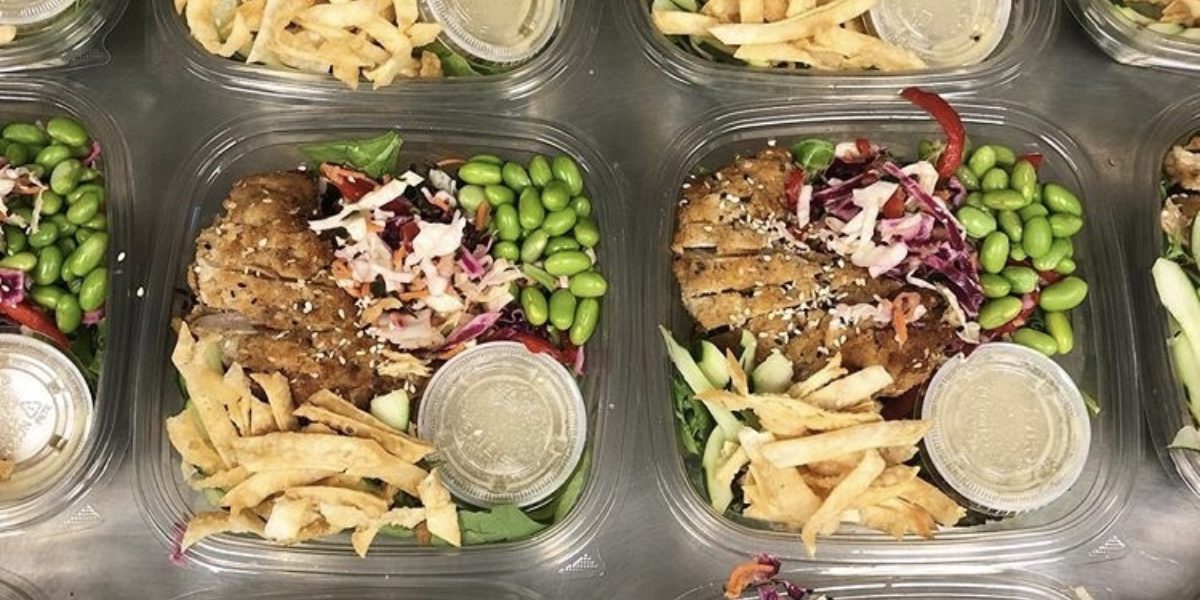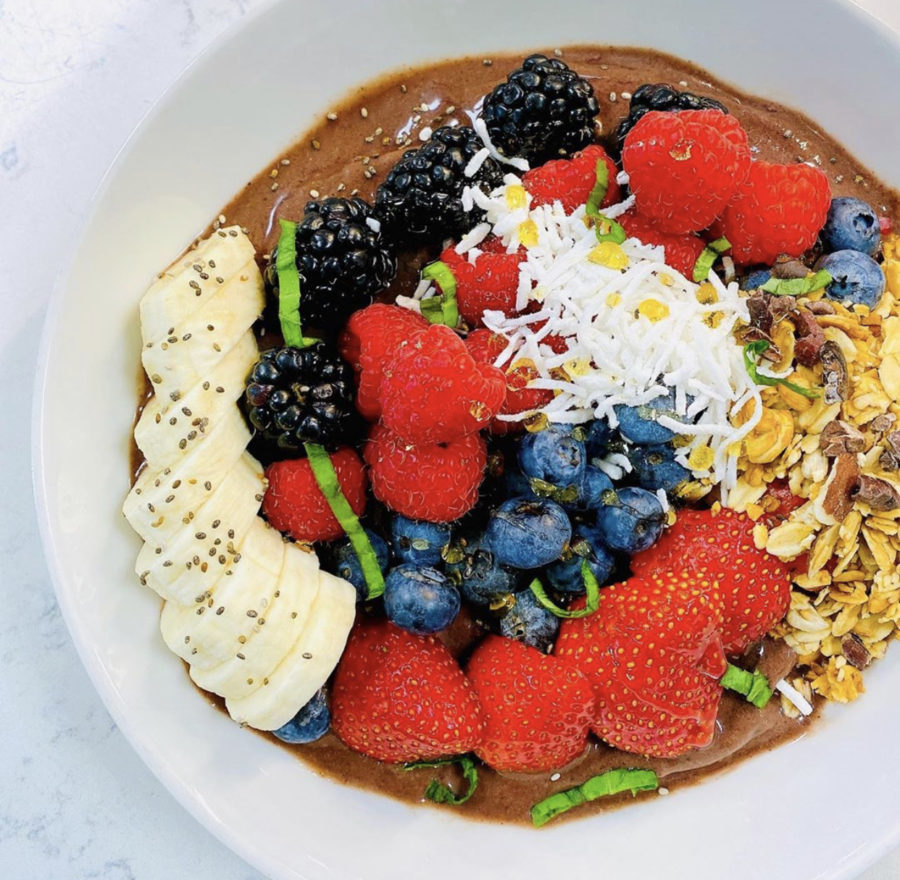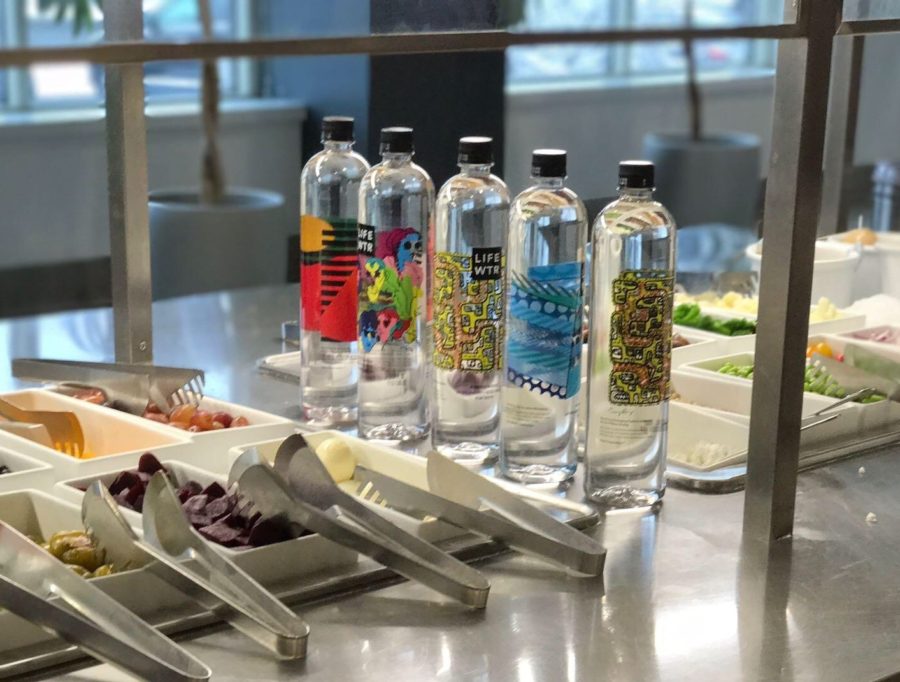
FLIK Family Friday: Performance Nutrition for Student Athletes
Student athletes face unique challenges. They’re often managing a delicate balance between prioritizing class with practice, homework with sports events, and social life with sleep. These competing priorities can lead to poor nutrition with skipped meals, eating on the go, or squeezing in a meal while working or studying. Ironically, good nutrition plays an important role in sports performance and without a focus on balanced meals that meet energy needs, athletes can suffer on the field and in the classroom.
While performance nutrition is highly individualized based on the athlete, the sport, and individual energy needs, there are some basics that can be applied no matter what type of athlete you are.

The Basics
- Balance the Plate. The athlete plates are the easiest visual guide to use for building a performance plate. The visuals give a basic overview of the nutrients needed throughout the day or within a specific meal depending on training level. For example, the easy day plate fills half the plate with colorful fruits and vegetables, a quarter of the plate with protein, and the other quarter with carbohydrates. As training intensifies, the plate shifts to incorporate more carbohydrates to fill more of the plate. This doesn’t mean skipping out on colorful fruits and vegetables or protein, but the increase in carbohydrates delivers additional calories in the form needed most by active students. Starting with these plates to guide choice can be a good first step for any student athlete who needs guidance on how to fuel performance.
- Don’t Overlook Micronutrients. Performance nutrition isn’t just about macros (aka macronutrients – carbohydrates, protein, and fat). Micronutrients (vitamins and minerals) are also necessary for peak performance. Athletes are likely to meet their micronutrient needs if total energy needs are met, but when meals are skipped or food groups are eliminated, the risk of not meeting micronutrient needs increases. Athletes with an increased risk for not meeting micronutrient needs include vegetarians and vegans and others who have eliminated a food group due to an allergy or intolerance. Athletes with chronic conditions such as irritable bowel syndrome or those with conditions that increase energy needs or interfere with digestion will also require special focus on micronutrient intake and may need a supplement. It’s worth working with a dietitian for individual recommendations.
- Hydration. It’s no secret that athletes must pay special attention to their hydration status. Dehydration has a significant, negative impact on sports performance. Hydration needs will vary depending on exercise environment, hydration status prior to exercise, intensity, body size, and more. Athletes should focus on hydrating with mostly water throughout the day versus sugar-sweetened beverages. Adding electrolytes to fluids during exercise is also necessary in many cases with some athletes also require re-fueling with carbohydrates during training.

6 Tips to Make Performance Fueling Work for You
- Commit to It. Make it a priority to fuel well throughout the day. This means making time for meals, keeping snacks on hand, and focusing on eating balanced plates with plenty of colorful fruits and vegetables.
- Get Creative. Student athletes may find that it takes a little creativity to fuel performance. This might mean learning new ways to prepare meals in the dorm or getting creative with healthy snacks on-the-go.
- Mix it Up. Eating the same thing every day can be a recipe for nutritional boredom and may even have negative health consequences. Mix up your meal choices. Even simple swaps like choosing a different vegetable for a side or opting for a plant-based protein can be helpful to keep your taste buds happy and your body fueled.
- Snack Smart. Snacks are a priority for student athletes who require greater energy needs. Don’t limit snacks to a single nutrient, but instead focus on pairing two or more together for increase satiety and nutrient diversity. Think carb + protein or fat + protein or carb + fat, etc. whenever possible. Check out these snack smart tips.
- DIY Hydration. You don’t need to spend lots of extra cash on fancy waters. Try making your own flavored water by mixing fresh herbs and fruit together in your re-usable water bottle. Herbs and fruit hold well in a dorm room fridge and this trick can be a gamechanger when you’re sick of plain water. Pro tip: keep a wooden spoon handy to muddle the herbs and fruit before adding water.
- Boost Sweets. We would never tell you to go without dessert, but we’re all about getting the most nutrition out of every bite. So why not try mixing up desserts with a little nutrient-boost from fruit? Make your own chocolate dipped fruit in the dorm by microwaving chocolate chips and dipping fresh fruit for a layer of added sweetness. We also love freezing chocolate dipped strawberries, banana slices, oranges, and more for a sweet, frozen treat on hot days.
For more on our FLIK Family Friday series, check out:
- FLIK Family Friday: Mozzarella Veggie Frittatas
- FLIK Family Friday: Dealing with “I’m bored”
- FLIK Family Friday: FLIK Family Friday: Snacks for Family Movie Night
+++
At FLIK Hospitality Group we believe in great food, great service, and great people. Our wellness first approach ensures our food supports healthy and delicious choices, specially curated by our team of culinary experts and registered dietitians. At FLIK, we believe in seasonality in sourcing our ingredients and providing a customized approach to the culinary and hospitality needs of each client. Our dedication to providing quality hospitality service is unparalleled in the industry.
Have feedback or questions for our team? Email us at flikblog@compass-usa.com.
Interested in working with us? Apply today!